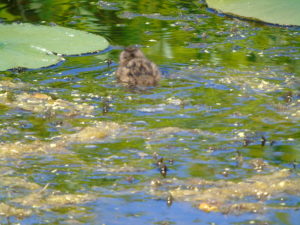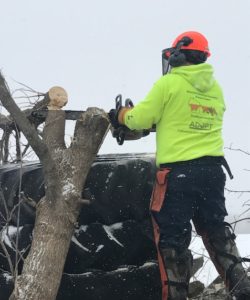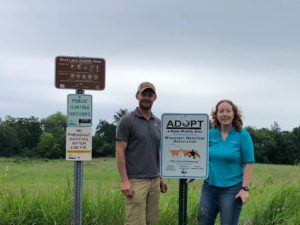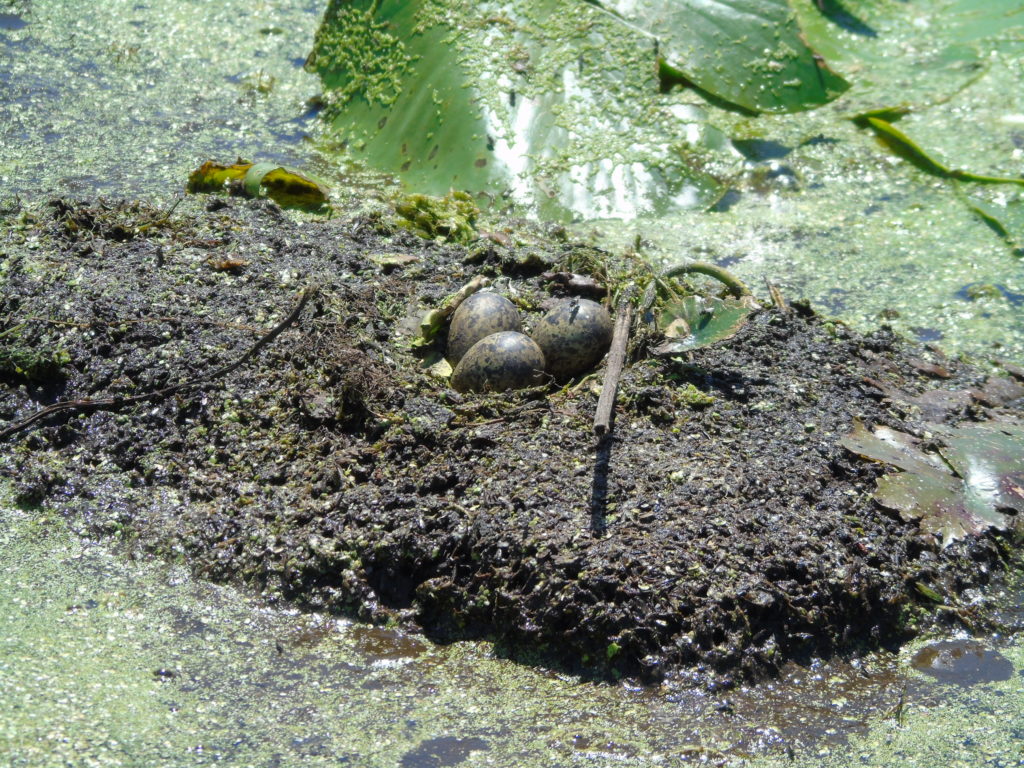Project: Statewide Wildlife Areas
County: Statewide
By Mike Alaimo, Lead AWA Volunteer
A huge congratulations and thank you goes out to the entire team of AWA volunteers up in the Wausau area for completing their first year of adoption of the George W. Mead Wildlife Area. The chapter went above and beyond and donated 120 hours of volunteer work at Mead. Check out their full report here that details the projects they completed including trail clearing, wood duck habitat improvement and chainsaw certification.
Summer is usually tough for projects as volunteers scatter to take advantage of the warmer weather and busy summer schedules. It is a time when this update gets a little “thinner”, but this year the teams are still pushing forward at a good clip. Members have been busy helping to band geese and finish projects across the state.
Our highlight of the week: Mud Lake WA received their AWA signs! Scott Hamele, WWA’s lead volunteer at this wildlife area, has been working with area biologist Sara Kehrli in launching projects for their first AWA contract year. As previously reported, they have installed nesting structures and helped with apple tree planting. On July 14th, the team will be going through chain saw training and performing a clean-up project. There are still openings for any AWA volunteer to get the training with Scott’s team. Interested in participating in this and/or other AWA projects? Fill out our volunteer form here and we’ll be in touch ASAP!
Paradise Valley WA: In early June, the Waukesha team composed of Anne and Ron Churchill, Nick Smart, Don Guenther and Mike Alaimo helped to clear around a parking lot to make the entrance more visible to users.
Rome Pond WA: The Black Tern nesting experiment had a few set backs. The floats had the mud wash away with our heavy rains. There is evidence that birds are using them to roost, but there were no eggs on them.
KEEP YOUR EYES OPEN WHEN BOATING NEAR MUD FLATS WITH TERNS PRESENT! When settling back away from the Tern colony to take pictures, my daughter and I started to watch patterns. Birds started to settle back down onto the small flats and lilies. There is a reason that these birds are struggling in our state with nesting habitat. We went back to check where there were settling down and found eggs by luck on some of the flats. An almost oatmeal thick mud clump the size of a frisbee was supporting three eggs. Looking around further, more nests were found that were similar.

A Tern duckling spotted at Rome Pond, boaters are asked to use extreme caution during nesting season
It would have taken only one shallow runner on plane to wipe out the entire colony, as they were that close to one another and on very fragile surroundings. Once fledged, the chicks can swim within 2 days, but they are not built to swim. We watched a pair of chicks struggle swimming for minutes. They would be defenseless against a boat.
Although we might have missed the nesting season with the floats, the research proved invaluable. Knowing the species you are helping is really important. All my Google time reading about them could not replace discovery and observation.
Enjoy the summer and remember to be watchful for our new arrivals by being careful running through our marshes during the summer!




